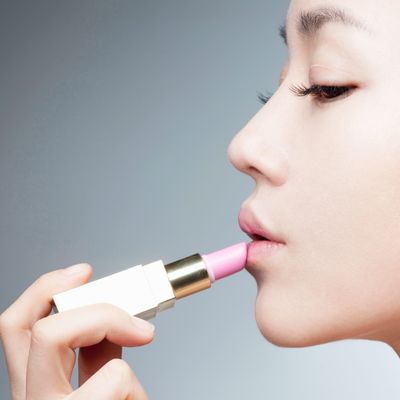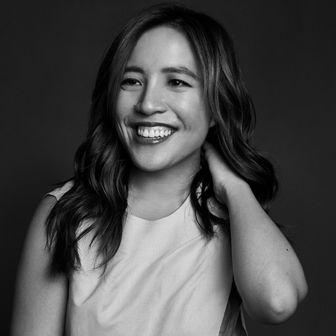
If you want a crystal ball into next year’s popular American beauty trends, look to the South Korean beauty industry. BB creams first launched in Korea several years ago before inundating the U.S. market and inspiring American beauty brands to spawn their own. Korea’s next big advancement, the cushion compact, appeared two years ago, and this year, American beauty companies like Lancôme, L’Oréal Paris, M.A.C Cosmetics, and Clinique have all moved to launch their own versions. And Korea’s influence shows no sign of waning.
To find out what to expect next in Korean beauty (and, several years later, American beauty), the Cut talked to Alicia Yoon, CEO and co-founder of Korean beauty site Peach and Lily and a licensed aesthetician in Korea and the United States. Yoon told us in her own words about what’s trending in Korean beauty.
Everyone wants to get more natural: “There is a watchdog app called HwaHea that everyone is using. It’s Yelp meets EWG meets Skin Deep meets Makeup Alley. You put in a brand and SKU and the ingredient list will populate. It will flag toxins, carcinogen levels, and reviews of the product. Many brands say, ‘This is great for sensitive skin.’ But this app has added an extra layer of watchdog-ness because someone can look at it and say, ‘How can it be for sensitive skin when there is a trace amount of synthetic fragrance?’”
People are getting more sensitive (it’s not just from the Korean dramas): “Every dermatologist or aesthetician I’ve spoken to says that Korean or Asian skin is very sensitive, even more so than non-Asian skin. A lot of people are realizing they need to be using sensitive-skin products, so I’m starting to see a lot of products come out with super-clean ingredient lists. There are also brands coming out with super-proprietary ingredients that soothe, care, and strengthen the skin barrier, and are specially formulated for Korean skin.”
A next-level highlighter is coming: “We’ve already seen some blending of the lines between skin care and makeup with cushion compacts and BB cream, but the trend is continuing to take off. A good example is a brand called 24/7, which launched a shimmer cream called Touch-Up. It’s been really hard to retail because it’s difficult to explain, but simply put: Everyone should have this in their life. It smells like baby powder and it has a thicker, creamier consistency. It comes in a little tube and creates a dewy, almost strobing effect with the slightest hint of shimmer in it. I use it under my eyes, on the tip of my nose, around the eyes. It’s the most unique shimmer cream I’ve seen. It’s skin care because it has great, anti-aging ingredients. But it goes to show that makeup should be good for you. It should be innovative.”
There’s a new way to do a clay mask without dirtying your bathroom: “There are ‘sheet’ masks that are clay- or charcoal-based. Some are even without the sheet. Some go on thinly, some are thicker, but it’s a clay-based mask that you peel off.”
Koreans are getting into single-double cleansing — a more thorough form of washing your face: “Everyone is like, How should I wash my face in the morning? I double-cleanse at night. But when I wake up, I have sebum and oil from the night before. The most popular makeup artist in Korea created a single-double cleanser called Lagom. When you put it on your face, it’s a light, transparent gel texture. When you rub it onto your skin, it becomes watery and gets a little essence-y. It’s a good morning-time cleanser that all the celebrities are asking for, when they don’t want to double-cleanse in the morning but want to wash their face and need a little more.”
Hyaluronic acid is getting an upgrade: “We’re checking out next-level hyaluronic acid, and brands are finding that mixing different kinds of hyaluronic acids ends up being more efficacious than just using one. For instance, Peach and Lily is collaborating with this one beauty expert, and we found the best-in-class amongst all the hyaluronic-acid chatter. There will be more hyaluronic-acid moisturizers to come.”
Not everyone needs to have a 12-step beauty routine: “Korean people can’t believe K-beauty is trending. But the truth is that there is no such thing as a 10- or 15-step regimen, as is often publicized in the United States. Some people may have more steps in general, but some people might not. Korean skin care isn’t about the number of steps, but about how well you know your skin. For instance, my skin is so frail and weak that I have 16 to 17 steps on average. My sister has a normal skin type, and she never lets me forget that everyone thinks she’s ten years younger. She looks 23. She does four things maybe but she knows exactly what she’s doing. She just doesn’t need more. It’s more about being custom. In Korea, what is trending is not so much about a million steps. It’s really knowledge empowerment. It’s understanding not just what this ingredient is — but what quality is.”





